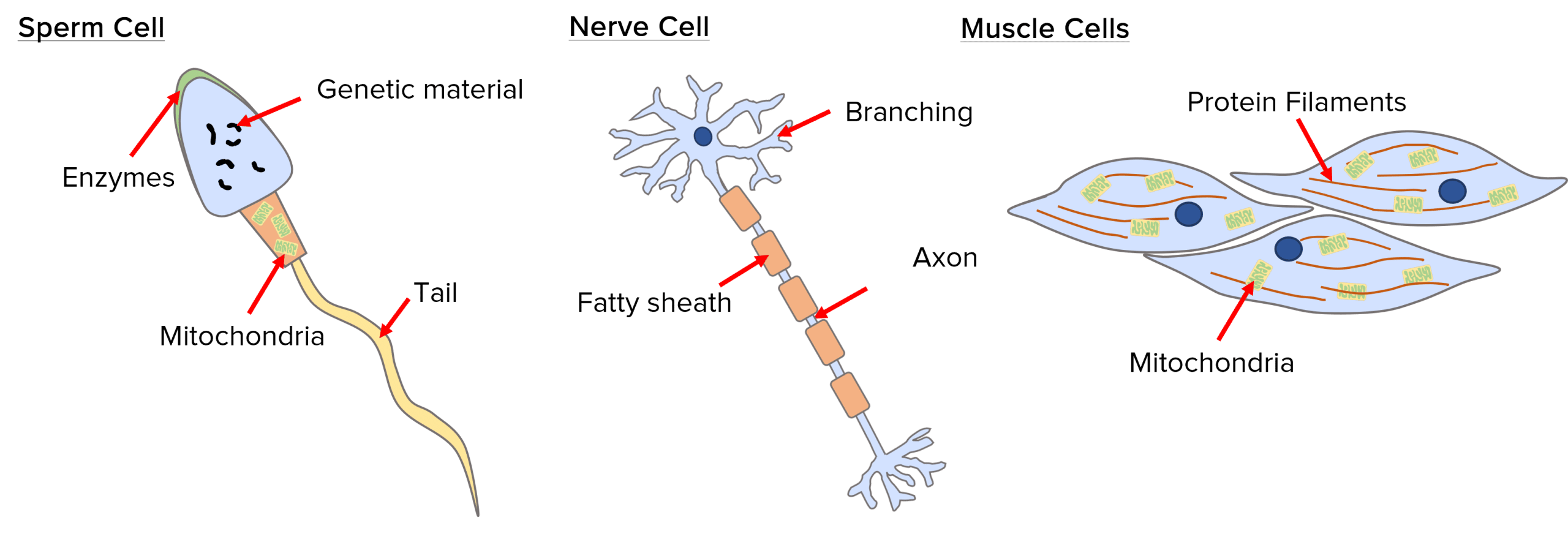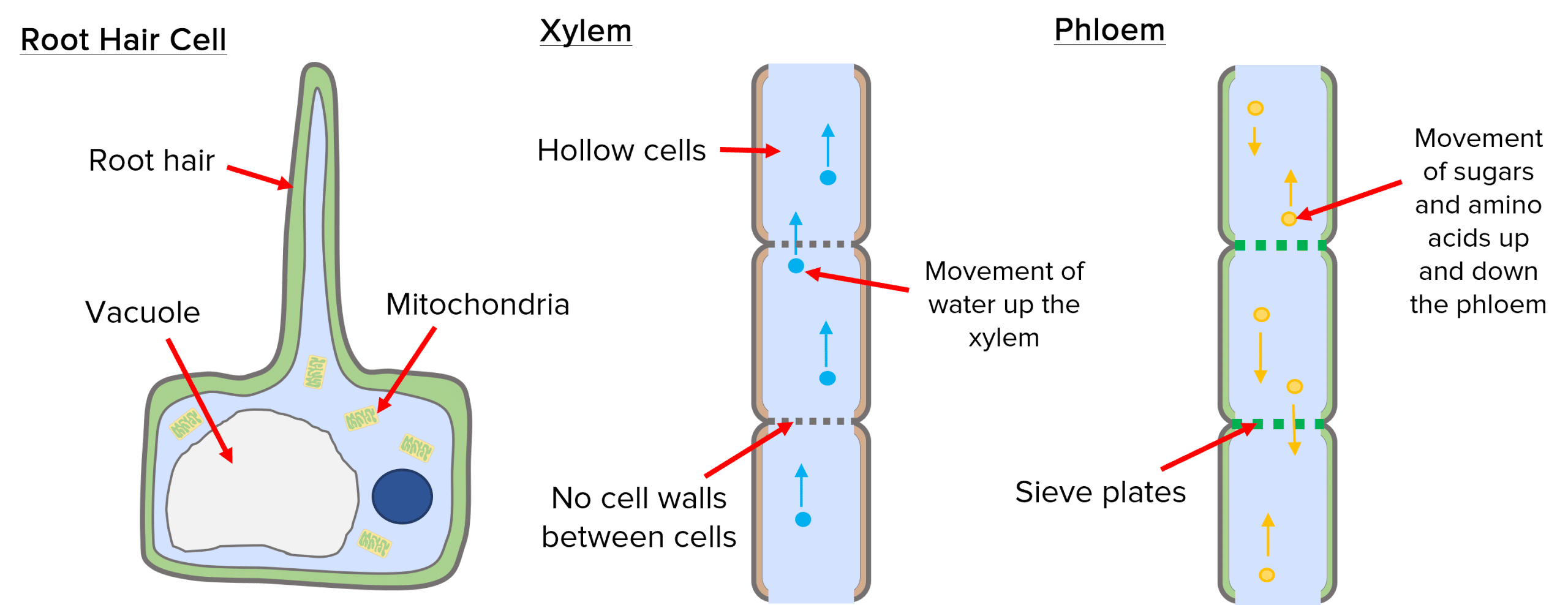Differentiation and Specialisation
Differentiation and Specialisation Revision
Differentiation and Specialisation
Differentiation is the process by which different types of cells develop their specific set of cell structures and become specialised.
Differentiation
Before a cell can carry out its specific role within an organism, it must first develop the correct subcellular structures for the job. It does this in a process called differentiation which produces specialised cells.
The majority of differentiation in animal cells happens in the early stages of life, as the organism develops, however in most plants the ability to differentiate is never lost.
Stem cells are undifferentiated cells which means they have the ability to develop into different types of cells.
Specialisation of Animal Cells
Here are some examples of how animal cells can be specialised for their specific functions:
- Sperm cells are specifically designed for the effective transport of male DNA to the female DNA for sexual reproduction. The head of the sperm contains all the genetic information ready for fertilisation and has enzymes that are able to digest the egg cell membrane. They also have lots of mitochondria to provide the energy required for movement and a tail to help it swim.
- Nerve cells are specialised for rapidly carrying electrical impulses around the body. They have a long axon to carry the impulse over long distances and are branched at both ends so they can connect and pass signals between one another. They are also insulated in a fatty sheath which helps the impulse move along the nerve quickly.
- Muscle cells must be able to contract quickly so they contain lots of mitochondria to provide energy for the contraction and have protein filaments that slide over to cause the muscle to contract.

Specialisation of Plant Cells
Here are some examples of how plant cells can be specialised for their specific functions:
- Root hair cells in plants are an exchange surface, specialised for absorbing water and nutrients from the soil. They are found on the plant’s roots and increase the surface area for efficient absorption. They also have a vacuole full of cell sap that is more concentrated than soil water which creates a water potential gradient for efficient water absorption. They also have lots of mitochondria to provide energy for the active transport of mineral ions from the soil.
- Xylem cells form the xylem vessel which transports water and dissolved ions in a plant. The cells of the xylem are dead and hollow and do not have top and bottom cell walls, subcellular structures or cytoplasm. This allows water to be drawn upwards.
- Phloem cells form the phloem which is responsible for the transport of sugars and amino acids around the plant. Cells are joined end to end with sieve plates between them to allow the passage of substances. Unlike xylem cells, phloem cells are living despite also having very few subcellular structures.

Differentiation and Specialisation Example Questions
Question 1: What is differentiation?
[1 mark]
Differentiation is the process by which a cell changes to become specialised so they are able to carry out their specific roles within an organism.
Question 2: Name a specialised feature of a nerve cell and explain how it contributes to the rapid signalling of electrical impulses.
[2 marks]
Any one from:
It has a long axon to carry the impulse over long distances.
It has branched ends to allow nerve cells to connect and pass on signals.
The axon is insulated in a fatty sheath which speeds up impulses.
Question 3: Why do root hair cells contain lots of mitochondria?
[2 marks]
They have lots of mitochondria to produce lots of energy for the active transport of mineral ions from the soil.
Differentiation and Specialisation Worksheet and Example Questions
Cell Specialisation Questions
GCSEOfficial MME
MME Premium Membership
£19.99
/monthLearn an entire GCSE course for maths, English and science on the most comprehensive online learning platform. With revision explainer videos & notes, practice questions, topic tests and full mock exams for each topic on every course, it’s easy to Learn and Revise with the MME Learning Portal.
Sign Up Now




